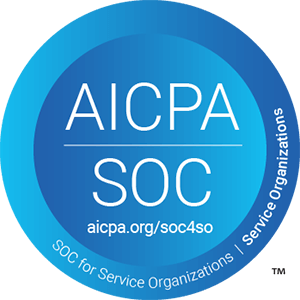![Major Challenges & Changes in Organization Management due to COVID-19 [Updated 2024] 1 organizational change management](https://www.peoplebox.ai/wp-content/uploads/2020/06/1663-1024x683.jpg)
Globally, enterprises are changing at an alarming rate due to the Covid-19 pandemic that led to a worldwide lockdown.
Organizations are undertaking projects and initiatives to seize opportunities, improve performance, or address key issues.
At the same time, they are also changing processes, hierarchies, job roles, and using technology to thrive in the market.
Change management for leaders, one of the most challenging and critical components of an organizational transformation, must be considered amidst a pandemic.
If implemented successfully, it can be an asset for your company that leads to success.
What is Organizational change management?
Organizational Change Management is the process of planning, implementing, and guiding an organization through significant changes in its structure, processes, culture, or technology. It is a structured approach that aims to help individuals, teams, and the entire organization transition successfully from the current state to a desired future state.
Organizational change can take various forms, such as mergers and acquisitions, restructuring, process reengineering, technology implementations, cultural shifts, leadership changes, or strategic realignments.
Regardless of the specific change, OCM focuses on addressing the people side of the transformation, as resistance to change and the failure to get buy-in from employees are major factors contributing to change initiatives’ success or failure.
Key aspects of Organizational Change Management include:
- Evaluating the organization’s preparedness and willingness to undergo the proposed change. This assessment helps identify potential barriers and challenges early in the process.
- Identifying and involving key stakeholders, such as employees, managers, and leaders, to gain their support and involvement throughout the change process.
- Developing clear and consistent communication plans to share the reasons behind the change, its benefits, and the steps involved. Communication is crucial in managing resistance and creating a shared vision.
- Providing employees with the necessary training and resources to adapt to the changes successfully. This may involve technical training, new processes, or developing new skill sets.
- Identifying and empowering change champions within the organization who can act as advocates and influencers to promote the change and support their peers.
- Establishing mechanisms to monitor the progress of the change, gather feedback from employees, and make necessary adjustments to the change strategy as needed.
- Addressing resistance to change, which is a common human response to uncertainty, by engaging with employees, addressing concerns, and providing a supportive environment.
- Recognizing and celebrating milestones and successes achieved during the change journey to maintain morale and motivation.
Why does change management for leaders matters?
Driving change in the workplace even under normal circumstances is quite challenging.
Covid-19 and the lockdown that followed have made the organizational changes even more complex and challenging, thus raising the need for change management for leaders that can help them with their organization.
Here are a few reasons why change management matters:
1 Organizational change is about individuals

Although many think that changes happen exclusively from an organizational perspective when a merger or acquisition takes place, they often overlook how these changes affect the employees who will now have to do their job differently, often bringing in new skills and expertise.
Companies tend to focus on physical location changes, financial structuring, data and system integration, etc, ignoring the fact that organizations do not change; it is the people within the organization who change.
The cumulative impact of successful changes happening at the individual level results in organizational success.
Effective change management strategies can help individuals make changes to their day-to-day work to deliver the desired results.
2Poor change management can be costly
When leaders do not invest time in a structured organizational change management strategy it often results in:
- The unwillingness of managers to devote the time or resources needed
- Low employee morale and divisions between “us” and “them”
- Increase in stress, confusion, and fatigue
- Valued employees leaving the organization
- Productivity declination on a larger scale for a longer duration
- Disruption in suppliers who feel the impact
- Negative impact on customers
- Missed deadlines, overrun budgets, and unexpected and unnecessary rework, often leading to project abandonment
3Impact on success
A study published in the Howard Business Review shows a 60-70% failure rate in organizational change projects — a figure that has stayed constant from the 1970s to the present.
While it is plausible to conclude that one must rethink the basics, an alternative explanation is that although the content of organizational change management stays reasonably correct in most organizations, it is the managerial capacity to implement that is woefully underdeveloped.
Managers often rely on experts to put together the plans, however, change management for leaders specifically focuses on not only becoming familiar with the concepts but becoming a new way of thinking that focuses on how to get something accomplished.
Different aspects of change management
Change management for leaders begins with understanding the different change aspects involved that would determine the success of a smoother transition with remote teams. There are three main aspects to it:
1 Individual aspect
This aspect focuses on the individual perspective to understand how people (read employees) experience change.
It is a natural psychological and physiological reaction of humans to resist change since we are quite resilient creatures, however, when supported through times of change humans are also known to be adaptive and successful.
Individual change management draws on disciplines like psychology and neuroscience to apply actionable frameworks to individual change required to make a successful transition: what messages do your employees need to hear when, how to coach people to demonstrate new behaviors, when is the optimal time to teach someone a new skill, what makes changes stay in someone’s work, etc.
2Initiative aspect
Although changes happen at an individual level, it is often impossible for a project team to manage such changes.
An organizational or initiative change management provides steps and actions to be taken at the project level that supports employees impacted by a project together.
It involves first identifying the groups and people who will need to change as the result of the project, and then, in what ways they will need to change.
Organizational or initiative change management for leaders then involves creating a customized plan that ensures providing the employees’ leadership, awareness, coaching, and training required to change successfully.
The individual aspect of change management is complementary to project management and ensures that the project is designed, developed, and delivered within the stipulated time while ensuring that the project is effectively embraced, adopted and used through change management.
OKR Software - Used by 500+ Companies
Transform your managers into leaders through personalized coaching, bite-size learnings and make it super easy for them to have meaningful 1:1s, check-ins, and align goals(OKRs).
3Organizational aspect
Organizational change management refers to building awareness, knowledge, desire to work, ability, and reinforcement across the organization.
Having an organizational change management capability means that effective change management is embedded in your organization’s structures, roles, processes, projects, and even leadership competencies.
This also leads to increasing an organization’s ability to respond quickly to market changes, adopt new technology more quickly, embrace strategic initiatives, and have a less negative impact on productivity.
Effective change management strategies for leaders during Covid-19
It is advisable to implement suggested change management strategies quickly and at every level.
- Having a clear vision and communicating the same.
- Changing thought processes at the leadership level.
- Starting with managers before employees for a smooth transition.
- Leverage the timeline: before-during-after Covid-19.
- Leading with cultural changes.
- Act your way into new thinking.
- Communication is the key to successful change management.
1Having a clear vision and communicating the same
Effective change leadership requires a clear vision, to begin with, that is shared with employees in a way that is both understandable and inspiring.
This shared vision should outline what will change and what will remain the same for the team and the organization.
Communication is an important aspect of change management for leaders since communicating the vision through various mediums and repeatedly will ensure that your employees have a clear understanding of the planned change and the reasons behind it.
The chances of change management success increase when employees are given a variety of opportunities to communicate. This can be done through:
- Creating a clear picture of organizational goals during and after Covid-19, how the changes will help achieve those goals, and how will it affect employees on an individual level
- Searching for and addressing communication bottlenecks that may be standing in the way of change
- Providing opportunities to employees to discuss the challenges and opportunities associated with the change, both formally and informally
- Talking to your employees individually, especially through one on one meetings through a reliable medium, for a personalized approach, about the change
Effective One on One Meetings
We built a software that automatically schedules, lets you set agenda, take notes, exchange feedback and track actions – all in one place.
2Changing thought processes at the leadership level
Support forms the backbone of successful change projects that are characterized by leaders removing barriers to an employee’s success.
This includes professional barriers such as the time and resources necessary to carry out a change plan, as well as personal barriers such as wounded egos and a sense of loss.
When leaders are focused exclusively on results, their employees do not get the support required to adapt to the change.
Changing thought processes at the leadership level means influencing employees to not only gain compliance but also the commitment necessary to drive change.
It also helps to map out the critical change agents by identifying key stakeholders — including board members, C-suite executives, clients, and others — and communicating your vision of successful change to them.
Moreover, to be a successful change leader it is important to never assume that you have all the answers.
Gathering formal and informal feedback from remote teams will help you make continual adjustments during the change since you would have the knowledge needed to make appropriate adjustments at every level.
3Starting with managers before employees for a smooth transition

A successful organizational change management initiative starts at the top, with a committed and well-aligned group of executives who strongly support your leadership.
When work is done in advance to ensure that everyone agrees about the case for the change and the particulars for implementing it, it leads to a much smoother transition.
Most importantly, the experience of working together with executives leads to a more collaborative and committed team that uses the same language to describe what the company needs to do.
This can give you the confidence that together with your managers, you can cascade the plan to other groups at other levels of the hierarchy.
OKR Software - Rated 4.8 on G2
Empower your managers to be a better leader with essential performance tools & personalized coaching support.
4Leverage the timeline: before-during-after Covid-19
Organizational change is a journey that requires a strategy that is derived from before, is processed during, and assessed after implementation.
As a leader, you must take note of the following steps throughout the timeline:
- Before the change: Begin to ask questions to determine the employee’s mindset that was before the pandemic and the readiness for a change.
- During the change: A great way to keep change efforts alive is by recognizing milestones in need of change and appreciating employee actions by praising the team’s progress and continued commitment.
- After the change: Reinforcing the goal of the initiatives taken with the help of surveys that help assess the degree to which the transformation has been successful.
5Leading with cultural changes
“Culture is everything.”
Louis V. Gerstner Jr., CEO, IBM
Strategies formed for organizational change management for leaders often fail to address culture, making it one of the toughest challenges to overcome.
Given the widespread recognition of culture’s importance, beliefs and behaviors of the people in the company, a company’s culture is often seen as malleable enough to adapt without requiring explicit attention.
Focusing on structural details such as reporting, decision making, and formal processes means that you might tend to forget that human beings with strong emotional connections to the culture will be enacting these changes.
This leads to either cultural resistance or failure to make the most of the cultural support since the existing culture was never considered when designing the transformation effort.
As a skilled leader, it is crucial to be conscious of the best practices of organizational change management and make the most of the company’s existing culture to draw emotional energy from it instead of pushing it away.
This can be done by tapping into the way people already behave, think, work, and feel to bring culture to the foreground and provide a boost to the change initiative by aligning elements of the culture to the change.
6Act your way into new thinking
![Major Challenges & Changes in Organization Management due to COVID-19 [Updated 2024] 9 changes in organization due to covid-19](https://www.peoplebox.ai/wp-content/uploads/2020/06/2490990-1024x683.jpg)
Amidst all the changes, an important point to consider is that bold statements of intent have only so much impact unless change initiatives are reflected in people’s daily behaviors.
Change initiatives must encourage people to shift their behaviors once formal elements like directives and incentives have been put in place.
People working together on cross-functional teams should collaborate more effectively and managers must be clear communicators since they have a mandate to deliver a message about the new strategy.
As a leader is it important that you start defining a critical few behaviors that will be essential to the success of the initiative and then conduct everyday business with those behaviors front and center.
When senior leaders visibly model new behaviors themselves, right from the start, it encourages employees to believe real change is occurring since they see it happening at the top of the company.
At the same time, instead of implementing a dramatic turnaround, you must adopt three specific behaviors:
- Making major, visible decisions in the next few days instead of later
- Spending time with people at the frontline leadership and engaging them in honest discussions
- Ensuring middle and lower ranks have direct contact with real-life customers
7Communication is the key to successful change management
As a leader, never assume that since you have conveyed a strong message of change at the start of an initiative, people will now understand what to do.
A powerful and sustained change requires constant communication, throughout.
In fact, the more kinds of communication employed, the more effective they are.
A study found that 3 in 4 employees see effective communication as the number one leadership attribute, yet less than 1 in 3 employees feel that their leaders communicate efficiently.
Internal communication plays an even more critical role today to communicate the abrupt changes being implemented due to Covid-19 so that employees, especially those working remotely, can understand where the new strategies are coming from and adjust their work accordingly.
Here are a few ways to improve your communication with your remote employees and those working from the office during Covid-19:
- Explain and give reasons to your employees for why are these specific changes being implemented
- Clearly explain the objectives you have set up and assist the teams to reach these goals
- Encourage employees to ask questions and most importantly, make sure you are able to answer all their questions since this is extremely important when it comes to driving change during the pandemic
- Be accountable for what is working and what is not working to foster a desire and commitment to fix problems to yield the best results
Top 5 change management challenges faced by leaders during Covid-19

Although organizational change management throws a unique set of challenges at every step and is different for every industry at times, a few common ones faced by leaders during the Covid-19 pandemic are:
1Defining a team’s work in a changed structure
A lot of jobs require individuals or groups to perform a certain set of tasks repeatedly, which over time, most people become comfortable with.
While many people view their value to the organization as being a good operations manager, technical architect, or security specialist, when asked to take on a different role, they may hesitate.
When employees hesitate to don a new role, even simple changes have the potential to disrupt the workflow and be disconcerting for the employees.
This often impacts people even with excellent technical skills who often struggle when asked to take on a new role since they now have to learn new skills or work through other people and are no longer rewarded for the skills that made them successful.
2Having the right executioner who has the time and experience
Execution is critical to any project since you cannot get involved to execute every project at the grass-root level.
Companies often fail in finding an executioner who understands the case for change clearly.
Or they are either stuck with someone who or works in a jiffy without a detailed discussion about the challenges that have created the need for a different way of operating in the first place.
It is a recipe for disaster if the person assigned for this role is not confident enough to confront the challenges, and justify the approach selected and the reasons the alternatives were rejected.
This often leads to a negative impact on the people who will be affected by the change, the employees, as without having all facts on hand, they might not be capable of empathizing with the individuals who dislike the new way of operating.
3Cultural and individual willingness
It is a known fact that individuals and organizations, initially, resist change to some degree.
Even skilled change management leaders often find it difficult to embrace the organization’s emotional energy and adapt it to new developments.
Just like cultural willingness, individuals too must be willing to examine new information and adopt new behaviors and approaches.
It is often observed that most people only accept changes that make sense and improve their job content or their work environment.
Stories, languages, and behavior are those parts of any current culture, that is made by the individuals involved, that needs to be aligned with a planned change.
If these are not paid heed to by strategic leadership, it can result in a missed opportunity to reinforce a new change that can help the enterprise.
4Level of engagement during changes
![Major Challenges & Changes in Organization Management due to COVID-19 [Updated 2024] 12 change in organisational behaviour due to covid-19](https://www.peoplebox.ai/wp-content/uploads/2020/06/3725873-1024x683.jpg)
What leaders often miss out on is the fact that midlevel and frontline staff can make or break a major program.
These groups understand the operational details of the current processes and can, therefore, anticipate potential problems and likely customer reactions.
They specifically also understand the challenges faced by employees working remotely during Covid-19.
While it is ideal to involve fewer people early in the process, identifying individuals in every team who are not sensitive to disruptions that major change brings can efficiently create a more committed workforce.
Also, by doing so, their suggestions are more likely to be accepted to support the final result.
5Implementing changes too late
With any major change, such as Covid-19, the core project team is often consumed by business process changes.
If effective organizational change management is not brought into the picture concurrently with the rest of the ongoing programs, there might be a possibility to face resistance from end-users, both employees and customers.
In the absence of any tangible information about the new system, the teams get a chance to form opinions on what the new system will do often resulting in its failure to materialize.
Summing up
Change management for leaders can lead to victory if you take the time to find out what is working and what is not.
This will not only help you adjust the next steps accordingly but will also save you from the failures to follow through results that are inconsistent and that deprive the organization of needed information.
For any major transformation, it is crucial to conventionally focus the attention on devising the best strategic and tactical plans. However, to succeed, you must also have an intimate understanding of the human side of change management, i.e. aligning the company’s culture, values, people, and behaviors.
This can help you lead long-term structural transformation that can scale up in magnitude and has strategic importance to reap rewards.
Note — This article is thoroughly revamped by Arpit Agarwal. He’s a Freelance SEO Copywriter and Blogger at No Degree Learn on 26th March 2021. Handled content work for brands like: Aarna TechSolution, DIYguru, Desien Solutions, Careers360, etc.







